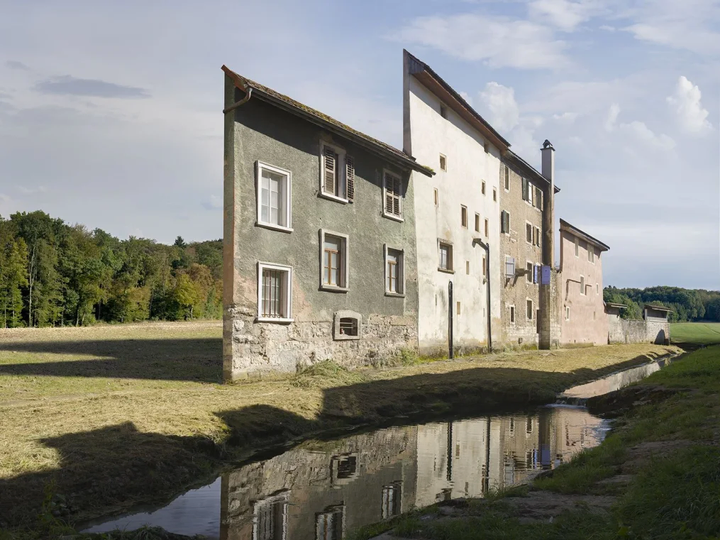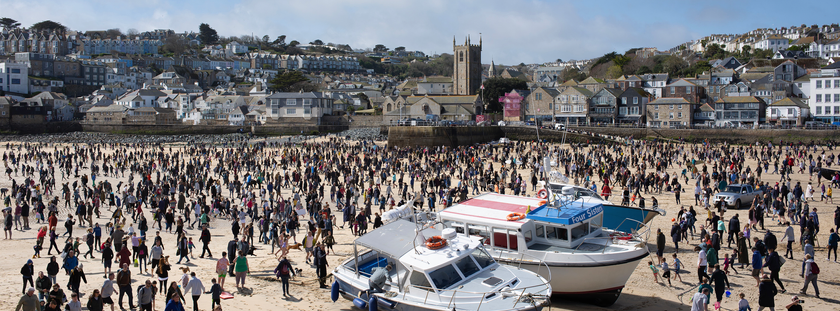The ongoing struggle for housing affordability threatens to hollow out local communities, restricting Cornwall’s accessibility to only those who can afford it
Every year, as the countdown to summer intensifies, Cornwall basks in the limelight, its charm captivating the imagination of holidaymakers. In 2022, it ranked in the top ten most searched for holiday destinations on Google, and expects over 5 million tourists annually. The region’s allure seems unstoppable, fuelled by the resounding popularity of cultural sensations like Poldark, esteemed documentaries and endless travel articles hailing it as a must-visit. However, beneath the surface allure lies an unsettling reality that risks being overshadowed by the flurry of media hype and social media chatter extolling its seasonal perfection. Behind the vibrant facade of picturesque towns, a severe housing crisis gnaws at the core of Cornwall’s communities.
To uncover this concealed reality further, illumination could arrive from an unlikely source in the form of ‘Potemkin Villages’ which have been used to describe ‘an impressive facade concealing an undesirable truth’. Cornwall’s crisis extends beyond a handful of small villages; the reality of poverty and housing precocity exists behind every perfect but, in the winter, empty town, shedding light on what could now aptly be referred to as ‘Potemkin Towns’.

The housing crisis in Cornwall is not a recent development, but an ongoing struggle that has plagued the county for years. As more properties are snatched up for holiday accommodations, the housing supply for local residents diminishes, squeezing the availability of affordable options even tighter. In April 2022, Cornwall had 12,776 second homes and more than 11,000 holiday lets. By contrast, in the first week of that month, 21,817 people were on its housing register. A 25-year-old single mother from Penzance shared her experience of looking for a rental property over a five month period, where even finding a place came down to a chance conversation, “If something did come up, I would call as soon as I saw it or I got the alert on my phone, but they told me they already had several viewings and so it would be taken. Other properties would say no children.” She continued: “I realised that the only way I was going to find somewhere was through word of mouth. I was having dinner with a friend and her aunt said that she might have somewhere. That is where I am living now.”
She has lived in the property since March and told me that nothing else has come up in the time she has been there. She said that if she had not been able to find her current rental, it is likely that she would still be looking now, culminating in nine months of actively searching for a home for her and her daughter. “It was very disheartening as it feels like you’re getting nowhere but you can’t do anything about it. If there is nothing coming up, there is nothing coming up.” She is not the only one. While she was looking, she saw over 10 Facebook posts of people in similar situations, some facing homelessness if they could not find somewhere to live soon. “These are people who are fully employed and have references. There are just not enough places to go around.”
According to local homelessness charity, St Petrocs, the growth of online holiday lettings and the prevalence of second-home ownership have perpetuated this shift, transforming the rental market into a realm where scarcity prevails and the dreams of secure housing for local individuals fade away. Many become trapped in cycles of short-term winter-let contracts, as landlords have the opportunity to charge premium rents or to Airbnb their properties during the summer. Furthermore, second home buyers are often wealthier individuals willing to pay higher prices. The effect is a drive up in the overall market value of homes, making it more difficult for local buyers to afford properties. In 2021, house prices rose by 48 percent in some areas, with some properties selling for £300,000 over the asking price. It is this combination of low income and high living costs that is a deadly cocktail when it comes to creating precarity around housing affordability in Cornwall. For many, the pressure of poverty and threat of homelessness is very real. St Petrocs state that as much as a staggering eight percent of the population are on the social housing waiting list.
Cornwall’s surge in tourism and second home ownership is inseparable from its long history of being extolled as an idyllic summer holiday destination. The establishment of the railway to Penzance in 1904, coupled with the advent of the enticing Cornish Riviera Express marketing slogan by GWR, transformed the region into a sought-after destination for metropolitan visitors. The pandemic further fuelled a housing boom in 2020 and 2021, attracting house-hunters seeking better value outside of cities and presented with the new opportunity of remote working. The government stamp duty cut further enticed buyers, even attracting investors eyeing holiday homes. As house prices soared, the county surpassed London as the most searched-for location on Rightmove.
While this vision of Cornwall as the perfect ‘get-away’ destination is captivating, it is also at best simplistic and at worst dangerous. Many pristine towns and villages may screen unpalatable realities, feeding an idealised fantasy of Cornwall that reinforces economic disparity and inequality. At the height of the Covid housing boom, in some areas, over 50% of properties in towns were lying empty for most of the year. Newlyn Fisherman Tom McClure, 56, described the street of his childhood home in Porthleven, “Out of 14 houses, 9 of them are second homes or holiday lets now. That is not uncommon.” Cornwall councils heat-map reveals some villages have as much as 71% of properties used as second homes or holiday lets. While an unlikely source, a phrase used in history and politics provides a fitting analogy and can lend insight to this hidden reality.

The term ‘Potemkin Villages’ originated from a historical deceit in which Russian minister, Grigory Potemkin allegedly erected fake villages to impress Catherine the Great during her visit to Crimea. Behind their picturesque facades- complete with happy waving peasants in the windows- these villages concealed harsh living conditions and poverty, starkly contrasting with the illusion presented to the ruler. This concept holds an eerie parallel to Cornwall’s housing crisis, where the region’s summer splendour hides the stark truth faced by many locals. Jodie Tellman, a Community Development Worker from Penzance, has worked in housing support, child poverty and food support. She is one of the founding members of Growing Links- a hot meal service for Penzance’s homeless, vulnerably housed, and people experiencing poverty. “There’s just a reluctance to admit to the magnitude of poverty here” she said. Jodie explained how Cornwall’s poverty is multifaceted, encompassing a diverse range of families seeking support including mid-range professionals like teachers or nurses. It is also complex, as the housing crisis interlaces with factors like job instability, low wages from seasonal employment, rural isolation, limited opportunities, and generational poverty. “The most frustrating fact to me is that it is hidden…The tourism industry tries to keep poverty separate; people want to relax here.”
Celebrated idyllic villages like St Ives, Mousehole, Padstow, Port Isaac, and Fowey, maintain an unspoilt aesthetic that attracts visitors seeking the Cornish experience. Estimates state that tourism accounts for 24 percent of Cornwall’s economy and one in five jobs. It is the lifeblood to many local businesses who rely on the annual influx of tourists to continue. However, the romanticised lifestyle of Cornwall is not open for everyone. There are children in Penzance and across the county who have not even visited their local beach due to financial constraints. Jodie informed me that she has met many such children through her work. Tourism can and does come at a cost. Behind the granite walls of many of these towns, like the cut-out houses or Potemkin’s villages, numerous properties remain unoccupied, presenting a significant concern for the local community.
Mr McClure emphasised the importance of supportive local networks within communities: “It’s about people helping each other, supporting each other.” He further highlighted the many-sided repercussions of vacant homes, extending beyond social implications to encompass financial challenges for local businesses during the winter. Cornwall’s enduring idealisation masks the reality that these places and communities can become silently and mercilessly eroded away. As Jodie remarked, “It is not just a pretty postcard”.
Cornwall, replete with its breath-taking coastlines and golden beaches, has long earned acclaim as the perfect holiday spot. On the outside, its quintessential coastal towns and villages present an image of Cornish authenticity, but the prevalence of second homes and holiday lets leaves residents grappling with poverty and unaffordable housing.
The danger of succumbing to the fate of ‘Potemkin Towns’ looms large, a scenario where the true vitality of these once-thriving communities is eroded, leaving behind hollow facades or as Jodie put it ‘Toy Towns’ devoid of genuine life. The ongoing struggle for housing affordability threatens to hollow out local communities, restricting Cornwall’s accessibility to only those who can afford it. A balance must be struck between tourism and housing needs, ensuring that the heart and soul of Cornwall remain firmly rooted within its communities rather than constructed for an external audience who are, ultimately, just passing through.






















